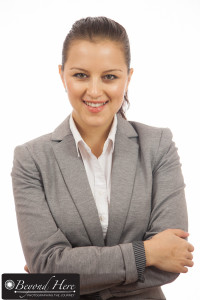Working with models is different to working with non models. Models are used to being in front of camera, and have often worked with a wide variety of people. They are generally not self conscious or shy, and they want to keep shooting until the right look has been captured. It is very different to shooting portraits or weddings for non models. Here are 5 tips for photographing models.
Tip 1 – Provide a Pre-Shoot Briefing. The model wants and expects to be a part of a creative team fulfilling a brief. Don’t expect the model to understand the look you are trying to achieve without discussing it with them first. Take time to explain the shoot and the desired outcome, and be open to input from the model.

Providing a briefing about the look you are trying to achieve
How do we do this? If this is self commissioned work, its about being able to explain the look you are wanting to capture. If it is client work, it is about being able to translate the clients brief into a vision for the model to understand. Take your time. Share sample images. Discuss what you are, and aren’t looking for. Allow time and space for discussion.
Photographing models is different than photographing non models. Tip number one, provide a pre-shoot briefing to the model. Share your vision with them. Let them add their good ideas to yours.

A relaxed and confident persona will be picked up by the model
Tip 2 – Be Confident and Genuine. Reality check! This tip is the same whether you are working with models or non models. Being confident means being well prepared. Your gear is in order. You equipment is laid out near the shooting area. You have practiced before the shoot and are not making it up as you go. You know what you are doing, and the shoot is going to be a success.
Being genuine is about treating people with respect. If you are starting out and have limited experience, don’t pretend to be something you’re not. Tell your model. We have all been in the same position and 99% of people will treat you well. Some will even go out of their way to help. Be confident. Be genuine. People respond well to these traits.
Tip 3 – Work in a Collaborative Way. Working with a model is having a partner in a shoot. It’s about working together to achieve strong images. It’s not about you working alone and achieving results despite your model.
I like to make sure the model is well briefed and it is clear we are working as a team – one (or more) in front of the camera, and one behind the camera. I like to share images during the shoot. That’s reviewing images together and discussing what’s working well and why, and what’s not working well and how to fix it. This works really well when we have ‘nearly’ got the look we want and just need some minor adjustments.
It’s a team effort. It’s about achieving strong images together. Tip number 3 work collaboratively.

Provide sincere feedback about what is working and what’s not
Tip 4 – Provide Sincere Feedback. Tip 4 goes along with tip 2. It’s about the relationship of different parties working together for a common goal. Models are not camera shy and don’t need insincere praise of everything they are doing. Everyone enjoys some positive feedback, but remember you are working with a professional. Give feedback on what’s working well and what’s not. Be specific. Work together to achieve the results you are looking for. You’re there to achieve a result, not to be a cheerleader. Tip number 4, provide sincere feedback.
Tip 5 – Relax. All people being photographed will be influenced by the mood and behavior of the photographer. If you are uptight, tense and irritable – expect the model to pick up on that. Your model will feel and look uncomfortable. If you are positive, confident and relaxed that will also translate to your model. Work on preparing well, so that everyone can relax and enjoy the shoot. You’ll produce better work this way.
Thanks for reading 5 tips for photographing models. Happy shooting!









